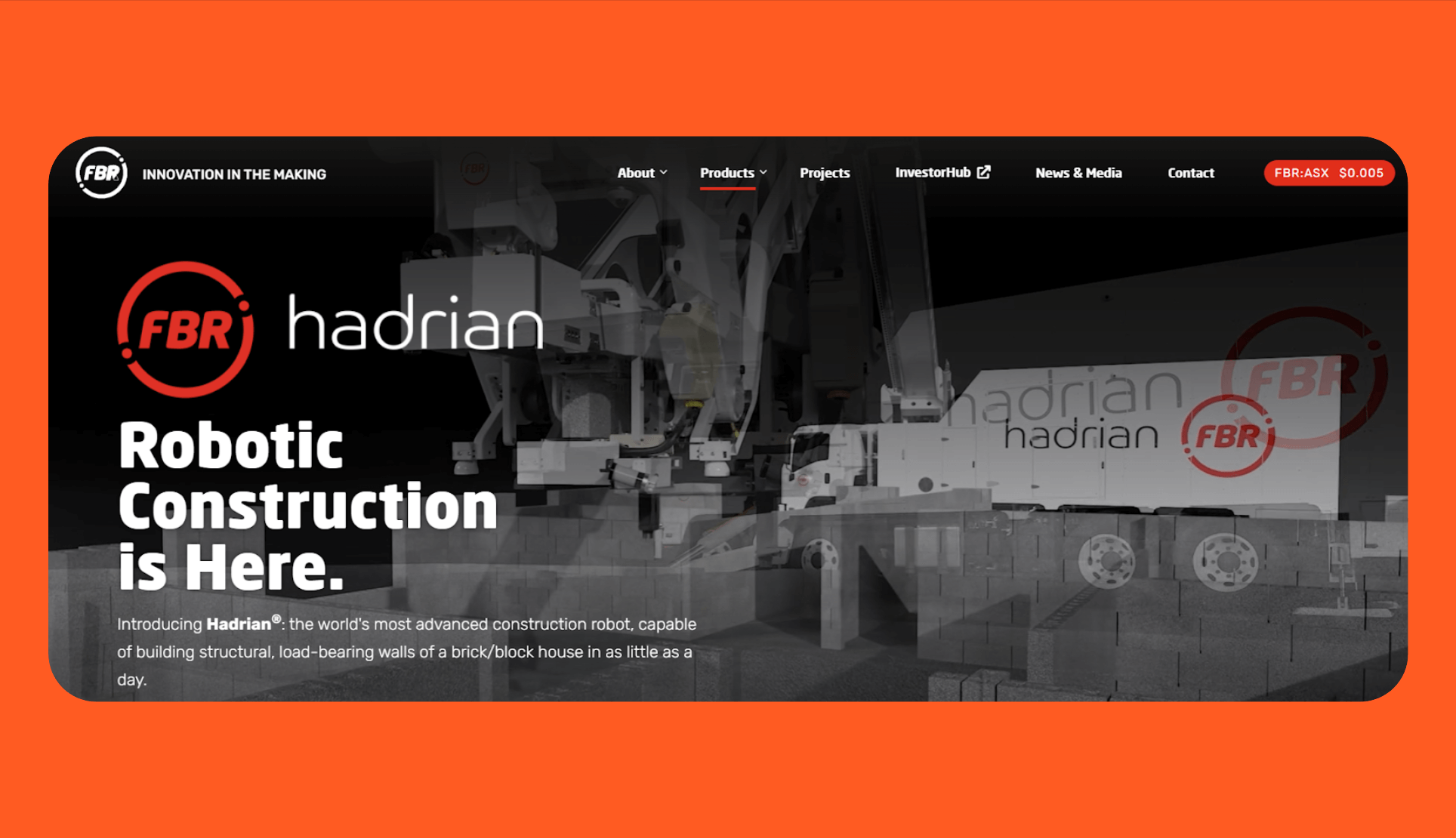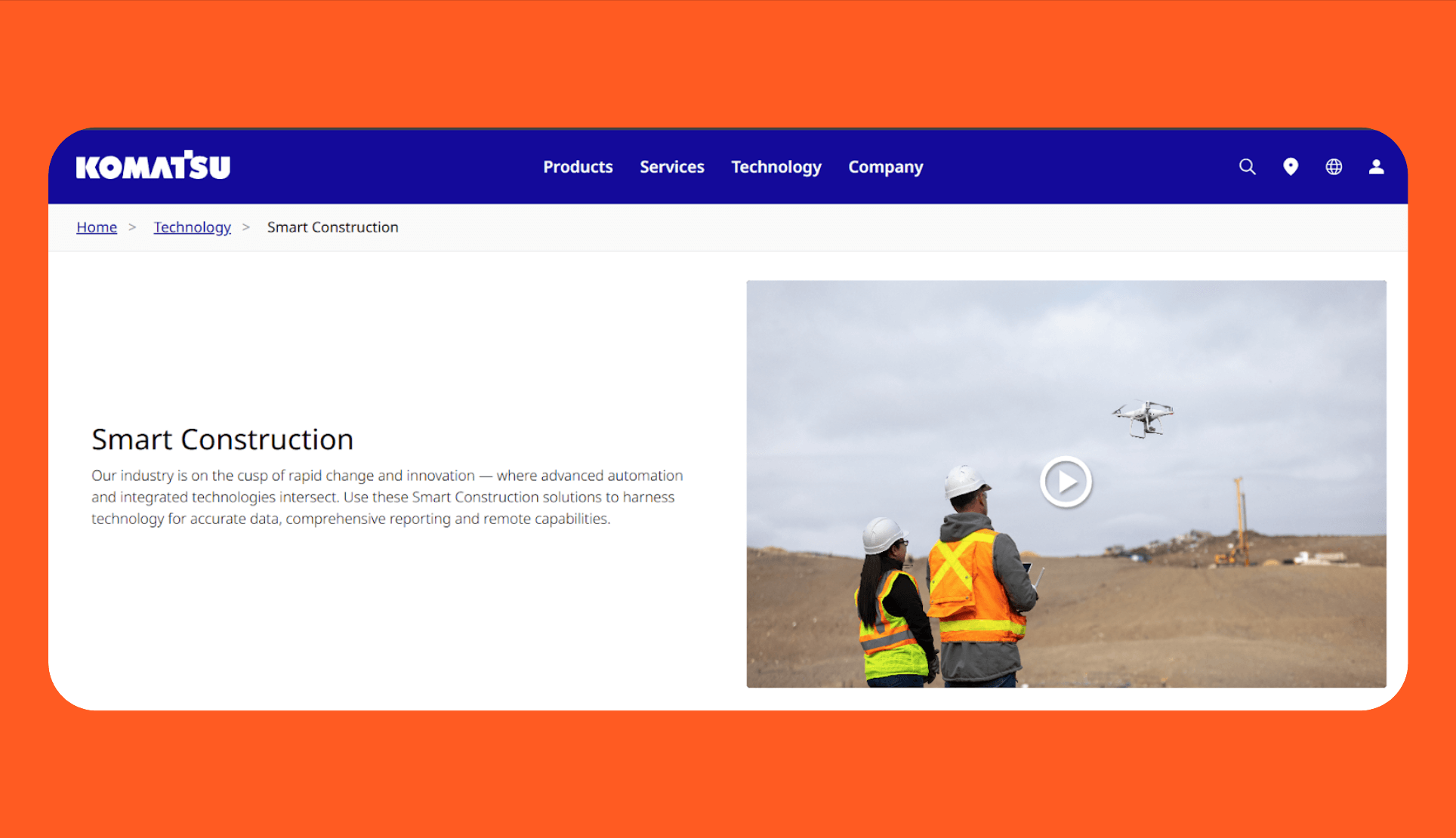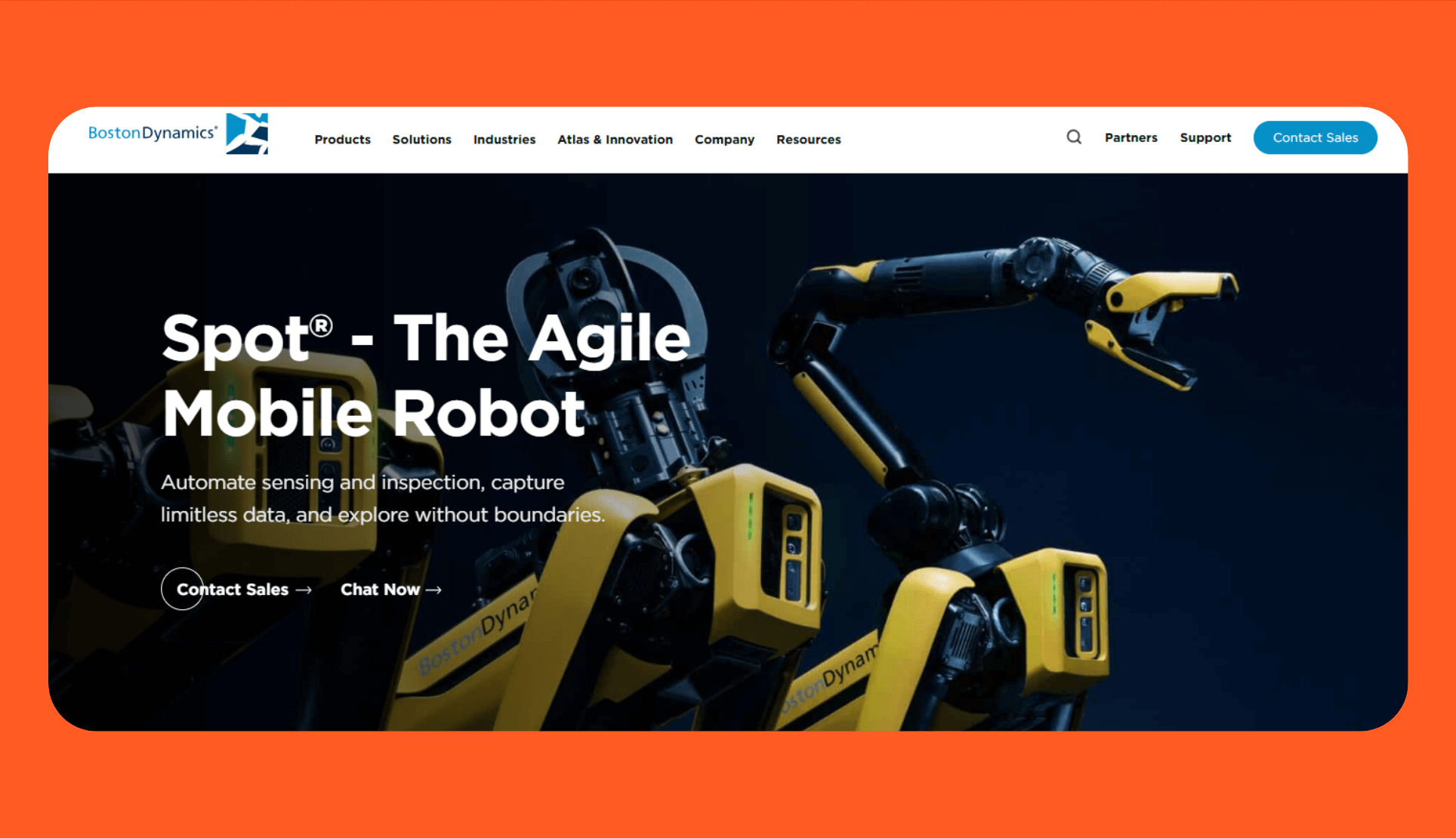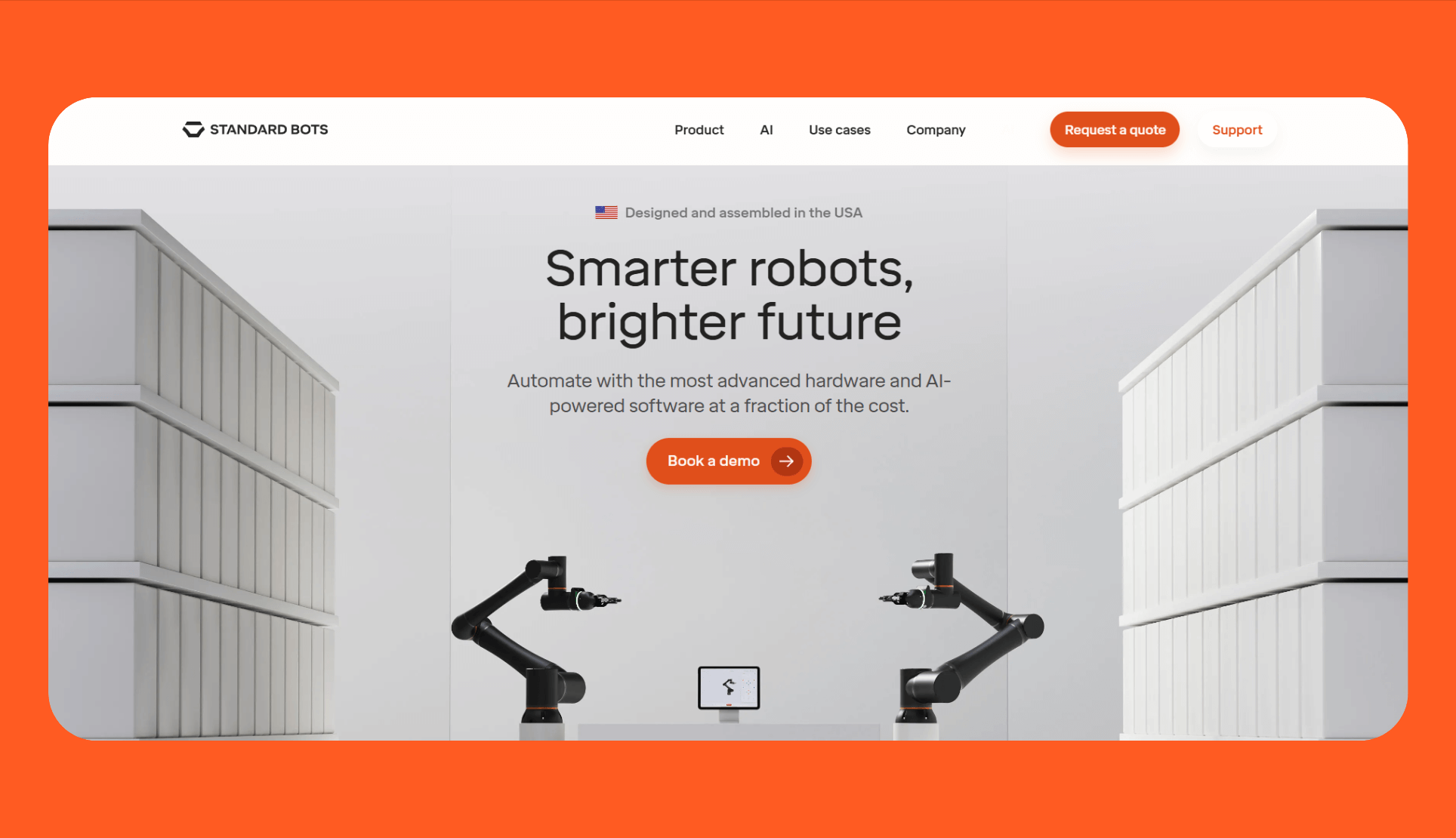Robotics has invaded construction, conquering the back-breaking work that burns out crews.
Bricklaying bots stack 3,000 bricks during lunch breaks. Autonomous bulldozers carve trenches at 2 a.m. without overtime complaints. Layout robots mark foundations with laser precision, ending the eternal hunt for tape measures.
These tireless machines transform construction from a grueling endurance test to a high-tech operation.
These machines automate repetitive tasks, reduce errors, and keep workers away from danger zones. As project deadlines tighten and skilled labor grows harder to find, contractors are turning to robotics to stay in business.
What are construction robots?
Construction robots are automated systems designed to perform various building and infrastructure tasks. But here's what that actually means: they're the machines doing the grunt work humans are tired of or straight up can't do safely anymore.
We're talking bricklaying, excavation, demolition, layout marking, and hauling materials across muddy job sites.
Think of these robots as your tireless coworkers who never need coffee breaks, never call in sick, and definitely never complain about lifting another 50-pound block. They pair hardware (arms, tracks, wheels, drones) with software (GPS, LiDAR, vision systems, AI) to get the job done faster and without the drama.
They are different from standard construction equipment because of their ability to:
- Sense and adapt to real-time job site changes
- Repeat precise actions consistently across long hours
- Reduce physical strain on human workers by taking on heavy, repetitive, or dangerous work
Construction robotics is not limited to on-site machinery. Robots are also widely used in off-site modular construction, such as automated timber framing, steel cutting, and wall panel assembly. This makes the entire building process more scalable and predictable.
Key types of construction robots
The key types of construction robots include machines for bricklaying, demolition, layout marking, 3D printing, earthmoving, inspection, and on-site material transport. Each type automates a specific stage to boost speed, safety, and accuracy.
Bricklaying and masonry robots
Bricklaying and masonry robots automate one of the most repetitive tasks in construction: laying bricks and blocks. Machines like the SAM100 (Semi-Automated Mason) can place over 3,000 bricks per day, guided by laser positioning and pre-programmed patterns. They ensure straight lines, uniform mortar application, and faster wall assembly with fewer manual corrections.
These construction robots are especially useful in large-scale residential or commercial builds where speed and precision matter.
Demolition robots
Demolition robots are remote-controlled or semi-autonomous machines that safely tear down concrete, steel, or brick structures. They’re smaller and more agile than traditional excavators. This makes them ideal for confined or hazardous environments like basements, bridges, or earthquake-damaged buildings.
Demolition robots use hydraulic breakers or cutters, letting operators work from a safe distance. This reduces the risk of injury from falling debris or unstable structures.
Construction layout robots
Construction layout robots use laser scanning and GNSS data to mark out foundation lines, wall positions, or anchor points directly onto the construction surface. Instead of relying on tape measures or chalk lines, these robots deliver millimeter-level accuracy across large sites.
Systems like HP SitePrint automate the layout process, enabling faster starts and reducing rework caused by human error. Contractors now use them regularly in high-rise construction and industrial installations.
3D printing robots
3D printing robots in construction extrude materials like concrete or polymer composites layer by layer to build structural components. Some print entire homes, while others produce prefabricated wall segments or insulation panels.
These robotic construction systems reduce material waste and speed up project delivery. Companies are using them to build affordable housing, emergency shelters, and customized designs that would be too costly or complex when using conventional methods.
Autonomous construction equipment
Autonomous construction equipment includes bulldozers, excavators, graders, and compactors that use GPS, IMU sensors, and onboard AI to operate with minimal human input. For example, a self-driving excavator can dig trenches or level terrain based on digital blueprints and adjust for real-time soil conditions.
These autonomous construction robots optimize fuel use, minimize idle time, and allow 24/7 operation without breaks. These are the key benefits of large infrastructure projects.
Drones and inspection robots
Drones have become standard tools for construction site monitoring. They capture aerial imagery, generate 3D maps, and provide real-time progress tracking. Ground-based inspection robots, on the other hand, enter tight or unsafe areas like under floors or inside pipes to collect visual data and perform safety checks.
This automation supports better planning, reduces insurance risks, and improves compliance with safety regulations.
Autonomous mobile robots (AMRs)
AMRs transport materials, tools, or waste across construction sites without fixed paths. Using LiDAR, SLAM, and obstacle detection, they move around dynamically, adjusting to human traffic, terrain, or layout changes.
These robots reduce manual hauling, improve workflow efficiency, and are especially useful in high-rise projects or large horizontal sites where equipment needs to move between floors or areas frequently.
Real-world innovations in construction robotics
Real-world innovations in construction robotics are already being used on job sites to improve speed, accuracy, and safety. From bricklaying to modular home building, robots are now solving common problems like labor shortages and layout errors.
Robotic bricklayers: Robotic bricklayers are already being used on housing and commercial projects to speed up wall construction and reduce manual labor. The SAM100 robot, used in U.S. schools and commercial buildings, can lay more than 3,000 bricks a day while maintaining precision.
In Australia, the Hadrian X by FBR is mounted on a truck and has built full homes in under three days, placing blocks using a robotic arm guided by digital plans.

Autonomous excavators: Autonomous construction equipment is being deployed to dig trenches and grade land without needing an operator in the cab. Built Robotics retrofits regular excavators with sensors, GPS, and software so they can run automatically. These machines are now working on utility and solar projects in the U.S., improving uptime and reducing labor costs.
Komatsu offers similar semi-autonomous dozers that follow digital site maps to shape terrain with minimal human oversight.

Drones and inspection robots: Drones and inspection robots are actively used to monitor construction sites and reduce safety risks. Firms use drones to capture aerial photos, map topography, and check progress. Robots like Boston Dynamics Spot carry sensors to inspect interior spaces or confined zones without putting workers in danger.

Layout robots: Layout robots are replacing tape measures and chalk lines with automated marking based on digital blueprints. HP SitePrint is being used in hospitals and warehouses to draw layout lines directly onto concrete, reducing marking time and layout errors by over 75%. This boosts speed and accuracy in complex projects with detailed floor plans.
Affordable cobots enter construction: Standard Bots Core ships in just 4 weeks and costs half what traditional construction robots do. Construction firms use it for rebar placement, material transport, and repetitive assembly tasks.

Timber robots: Timber automation robots are being used in prefab housing factories to build frames faster and with less waste. Companies like Blueprint Robotics in the U.S. and Randek in Sweden use robotic arms to cut, nail, and insulate timber panels in a controlled environment.

These pre-built panels are then delivered to job sites, helping meet housing demands with faster and more sustainable construction.
How is robotics transforming construction?
Robotics is transforming construction by automating repetitive tasks, improving safety, and increasing build accuracy across job sites. These advantages help contractors work faster and smarter while managing labor shortages and rising costs.
- Robots reduce project timelines by operating continuously without fatigue. Autonomous excavators, bulldozers, and bricklaying systems can run day and night, speeding up excavation and wall assembly. This keeps projects on schedule, even when skilled labor is in short supply.
- Robots improve accuracy and reduce costly errors during construction. Layout robots and 3D printing systems deliver millimeter-level precision, cutting down on rework. These tools follow digital blueprints and eliminate the small mistakes that often delay projects.
- Robots enhance job site safety by taking on dangerous tasks. Demolition robots, trenching bots, and confined-space inspection tools reduce the need for workers to enter high-risk zones. This lowers injury rates and insurance liabilities.
- Robotics in construction supports sustainability through material efficiency. Automated systems use exactly the amount of concrete, timber, or insulation required. This reduces waste and supports greener building methods.
- Off-site robotic construction increases speed and reduces job site risks. Prefab systems use robotic arms to build panels, walls, and modules in clean, controlled environments. This minimizes on-site complexity and accelerates final installation.
Challenges and adoption hurdles
Challenges and adoption hurdles include cost, training needs, and unpredictable job site conditions.
Here are the four main barriers companies face today:
- Robots are still expensive to buy and deploy. Most construction robots require a large upfront investment of around $100,000 or more, including equipment, software, and integration. This makes adoption harder for small and midsize firms, even though long-term ROI is promising.
- Skilled workers are needed to operate robotic systems. Robots still need people to program, supervise, and maintain them. Many teams lack the training to handle robotic workflows, especially in companies without dedicated automation staff.
- Job sites are complex and constantly changing. Construction sites aren’t as controlled as factories. Uneven terrain, weather delays, and overlapping crews make it hard for robots to run without frequent adjustments or reconfiguration.
- Regulations and safety standards are still unclear. In many places, laws haven’t caught up with autonomous machines on job sites. Without clear rules for liability, safety, or certification, some firms avoid taking the risk, even if the technology is ready.
Summing up
Construction robots are already stacking bricks, digging trenches, and marking layouts while crews focus on skilled work. From SAM100 laying 3,000 bricks a day to HP SitePrint eliminating layout errors, these machines solve real problems: labor shortages, safety risks, and tight deadlines.
The best part? You don't need a Fortune 500 budget anymore. While legacy robots cost $100K+, newer options like Standard Bots Core make automation accessible at $37K. Whether you're running a small shop or managing major projects, there's a robot ready to handle the grunt work. Time to let the machines do what they do best, so your team can do the same.
Next steps with Standard Bots’ robotic solutions
Looking to automate your construction workflows? Standard Bots Core is the perfect six-axis cobot addition to any job site or modular factory, delivering unbeatable precision and flexibility.
- Affordable and adaptable: Core costs $37K. Get high-precision automation at half the cost of traditional robots.
- Precision and power: With a repeatability of ±0.025 mm and an 18 kg payload, Core handles even the most demanding construction tasks.
- AI-driven simplicity: Equipped with AI capabilities on par with GPT-4, Core integrates smoothly with new or existing robotic setups.
- Safety-first design: Machine vision and collision detection mean Core works safely alongside human operators.
Schedule your on-site demo with our engineers today and see how Standard Bots Core can bring AI-powered greatness to your job site.
FAQs
1. What are construction robots?
Construction robots are automated or semi-autonomous machines designed to handle physical building tasks on construction sites. These tasks include bricklaying, demolition, surveying, concrete pouring, material handling, and inspection.
Most of these robots use a combination of sensors, cameras, GPS, and AI to operate accurately and adapt to real-time site conditions.
2. What types of construction robots exist today?
The types of construction robots that exist today include bricklaying robots, demolition robots, layout robots, 3D printing robots, drones, autonomous excavators, and mobile material carriers. Each type automates a specific part of the construction process, such as stacking blocks, marking foundations, or mapping sites.
3. How are robots used in construction sites?
Robots are used in construction sites to automate dangerous, repetitive, or time-consuming tasks. Layout robots print accurate wall and fixture guides, excavation robots handle trenching and grading, and drones or inspection robots gather visual data to track progress and detect hazards.
4. What are the benefits of robotics in construction?
The benefits of robotics in construction are improved productivity, accuracy, and safety while reducing labor strain, material waste, and build time. Layout and 3D printing robots boost precision, while autonomous machines enable faster site prep and help contractors address labor shortages.
5. What are the challenges of using robots in construction?
The challenges of using robots in construction include high upfront costs, training needs, inconsistent site conditions, and unclear regulations. Small firms may struggle to afford or integrate systems, while dynamic job sites and limited legal frameworks also slow adoption.
6. What is the future of robotics in construction?
The future of robotics in construction points to fully autonomous equipment, smarter AI-driven decision-making, and wider prefab automation. Robots will take on more complex jobs like electrical or HVAC installation, while timber factories and on-site bots accelerate sustainable home building.
brighter future
Join thousands of creators
receiving our weekly articles.








.png)

